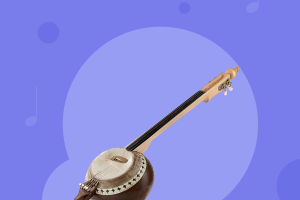The violin is a stringed instrument. It has a total of four strings.
The violin is widely spread around the world and is the most important instrument in the string section of modern orchestras. It occupies a very important position in instrumental music and is the backbone of modern symphony orchestras. It is also a solo instrument with high playing skills and is known as one of the three major instruments in the world along with the piano and classical guitar.
The violin is a member of the large violin family. It is the closest to the human voice and has a wide range, which is more expressive than the soprano and has a complex and diverse range of expressions, which is why it is called the "Queen of Instruments".
The violin has an elegant and luxurious sound and can perform a wide variety of music brilliantly. It is capable of playing not only weak notes that require breathlessness but also powerful notes.
The violin's fast bowing can produce a thousand notes a minute. It can play the mournful, the soft, the joyful, or the melancholic perfectly. Almost all composers have written for the violin.
Gazing at each violin piece, you will feel that it is a rare treasure brought to mankind by the Creator, and you will also marvel at the wisdom and civilization of mankind. Explore the heritage of the violin, and its development, and wander through a vast ocean of violin masterpieces.
Each piece is marked by the time of the composer and the performer and contains deep emotions and great skills. This is a fascinating thing.
Therefore, we hope to explore the mysterious world of the violin and experience its culture, heritage, and endless charm with you.
The origin of the violin is in Italy, the birthplace of the European Renaissance. So, carrying such a culture, the violin was handed down.
Music, in the eyes of people, is the highest level of human conquest of nature, far above language. The forms and emotions expressed by music are much richer and heavier. Therefore, as an instrument that existed in Europe since the Middle Ages and was mostly used by royalty, the status of the violin cannot be underestimated.
The violin's wide range and expressive power, as well as its unique temperament and strong cultural and historical flavor, make it difficult to understand it in a moment.
The existence of the violin can be traced back as far as 1550 AD. As to when it became an instrument of status, it dates back to around 1600. It was then that it first appeared in standard form in Italian opera orchestras. In 1626, when King Louis XIII organized a symphony orchestra in his court, the violin's status was further enhanced, and since Lully, its reputation has grown even more.
In the early days, the violin's strings were too thick and too loosely set, so the tone was stilted and low.
Between the eighteenth and nineteenth centuries, violin-making techniques were greatly improved, inspired by violin composers. They switched to thinner strings and tightened them up so that they could be played to perfection.
As a result, the standard of playing was greatly improved, not only in terms of rhythmic fluency but also in terms of interpretation of the meaning of the piece. The left-hand technique was perfected and new fingerings were introduced.
In recent years, the violin has become one of the most popular instruments in modern pop and jazz music.
Many rock and pop musicians have abandoned the use of acoustic synthesizers and have adapted their music to orchestral pieces with a lot of violins to create a softer effect.


